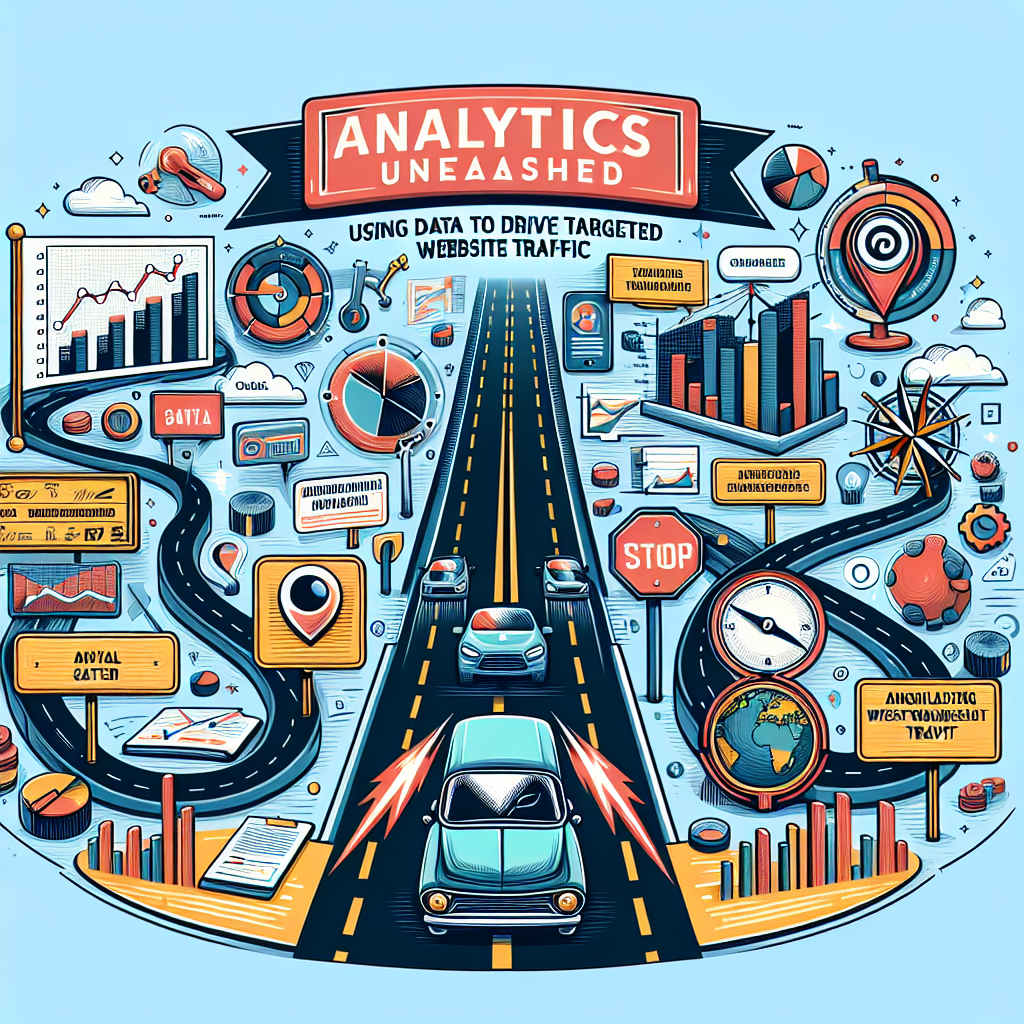In the digital age, where information is both abundant and easily accessible, businesses must find strategic ways to stand out and drive targeted traffic to their websites. Traditional marketing tactics, while still valuable, are often insufficient to keep pace with the dynamic and personalized nature of modern consumer behavior. This is where data analytics comes into play, transforming raw data into actionable insights that refine marketing strategies and boost website performance. Welcome to "Analytics Unleashed: Using Data to Drive Targeted Website Traffic."
The Power of Data Analytics
Understanding User Behavior
Data analytics empowers businesses to gain a granular understanding of user behavior on their websites. By leveraging tools such as Google Analytics, businesses can track various metrics, such as page views, session duration, bounce rates, and user journeys. This detailed data can reveal patterns and preferences, helping to identify which content, products, or services resonate most with visitors.
For instance, suppose a significant percentage of visitors leave a site after viewing a particular page. In that case, this may indicate issues with the content’s relevance or usability. Addressing these issues can significantly improve user experience and keep visitors engaged, thereby enhancing traffic quality.
Segmenting the Audience
One size does not fit all when it comes to digital marketing. Data analytics allows businesses to segment their audience based on various criteria such as demographics, geographic location, behavior, and past interactions with the website. This segmentation enables more personalized marketing efforts, ensuring that messages and promotions are tailored to meet the unique needs and preferences of different audience segments.
Identifying Traffic Sources
Knowing where your traffic comes from is vital for optimizing marketing strategies. Analytics tools provide insights into various traffic sources — organic search, paid search, social media, direct traffic, and referral sites. By analyzing the performance of each traffic source, businesses can allocate resources more effectively. For example, if organic search drives the most conversions, it may be beneficial to invest more in SEO efforts.
Driving Targeted Traffic
Content Optimization
Content is king, but not all content drives targeted traffic. By utilizing data analytics, businesses can identify topics that are of genuine interest to their target audience. Keyword analysis tools can help determine which search terms are most relevant, enabling content creators to produce high-quality, SEO-optimized articles, blog posts, and other content. Engaging content not only attracts visitors but also encourages them to stay longer and explore further.
A/B Testing
A/B testing is a powerful way to optimize various elements of a website, from headlines and images to call-to-action buttons. By creating different versions of a webpage and measuring their performance, businesses can identify which elements drive higher engagement and conversions. This data-driven approach ensures that websites are continually refined to maximize their effectiveness in attracting and retaining visitors.
Personalization
Personalization goes beyond simply using a visitor’s name in email marketing. Advanced data analytics can enable deep personalization, such as recommending products based on past purchases or tailoring content based on browsing history. Personalized experiences are more likely to resonate with users, improving satisfaction and increasing the likelihood of repeat visits.
Marketing Automation
Marketing automation platforms, powered by data analytics, allow for the creation of highly targeted campaigns that nurture leads through the customer journey. By setting up automated workflows based on user behavior and segmentation data, businesses can send personalized messages at the right time, driving visitors back to the website and encouraging them to take desired actions.
The Future of Data-Driven Traffic Generation
As technology continues to evolve, data analytics will become even more sophisticated, offering deeper insights and enabling more precise targeting. Artificial intelligence (AI) and machine learning (ML) algorithms, for example, can analyze vast datasets to predict future behavior and trends, providing businesses with a competitive edge.
Additionally, the rise of privacy concerns and regulations, such as the GDPR, means that businesses must handle data responsibly. Future analytics tools will likely integrate advanced privacy features that allow for compliant data collection and analysis without compromising user trust.
Conclusion
In a digital landscape saturated with information and competition, driving targeted website traffic is both an art and a science. Data analytics unleashes the potential of raw data, enabling businesses to understand, segment, and engage their audience more effectively. By embracing data-driven strategies, businesses can not only attract more visitors but also ensure that those visitors are genuinely interested and likely to convert, paving the way for sustainable growth and success.
So, let data be your guide. Unleash its power, and watch your website traffic soar to newfound heights.
